Art & Exhibitions
An Artist Just Transformed Berlin’s Berghain Nightclub Into an Eerie, Immersive 3D Swamp—See Images Here
Danish artist Jakob Kudsk Steensen drew on gaming software for the high-tech installation.
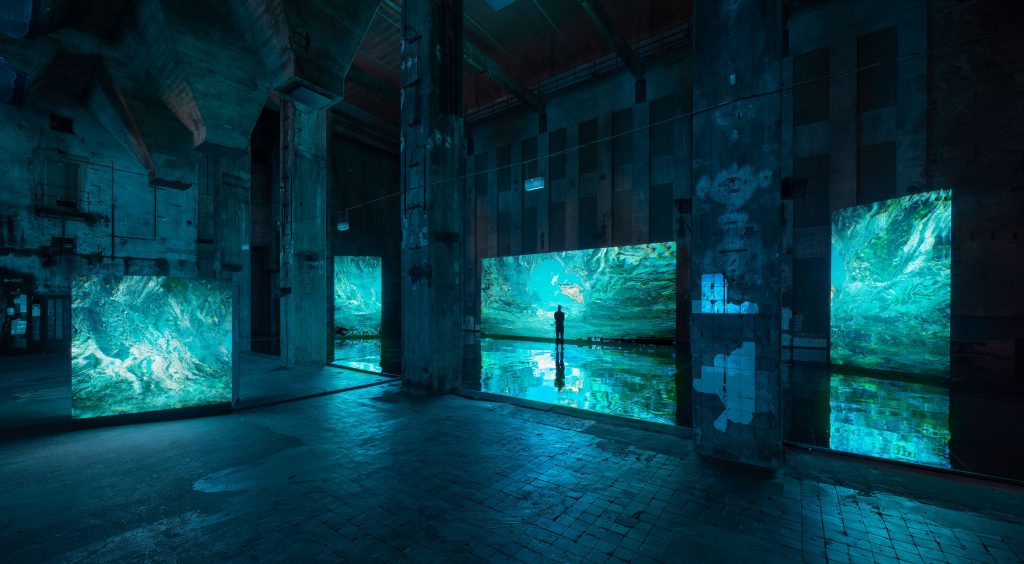
Danish artist Jakob Kudsk Steensen drew on gaming software for the high-tech installation.

Kate Brown

It feels familiar and alien at the same time. Many Berliners have stepped inside the towering walls of Berghain, the most famous nightclub in Germany, but it is different this summer. Its halls are not yet again filled with strobing lights and beating techno music. Instead, filling its empty dance floors is a glimmering, two-story art installation featuring an unusual soundscape of flora and fauna. The club has been re-wilded.
Danish artist Jakob Kudsk Steensen’s ambitious installation, Berl-Berl, which opened this month, delicately transforms the notorious nightclub into a swampy 3D ecosystem using innovative technologies and gaming software. The artist, who is based in Berlin, stitched together masses of archival and original images to create a fluidly moving filmic landscape that twists and turns across vast and microscopic panorama.
“Berl,” the first syllable of Berlin, is actually an old Slavic word for swamp, a testament to the Slavic populations that used to reside in the region (some still do), and to the landscape’s former state, before it was drained in the 18th century. All the moving imagery used for the show was culled from around the German capital’s traces of remaining wetlands, or from the Nature Museum’s extensive archives. It immerses viewers in a fictional world of nature that feels impossible and infinite, but very much stems from the real—a realization that feels particularly harrowing in a summer of back-to-back climate emergencies, including Germany’s worst-in-a-century floods.
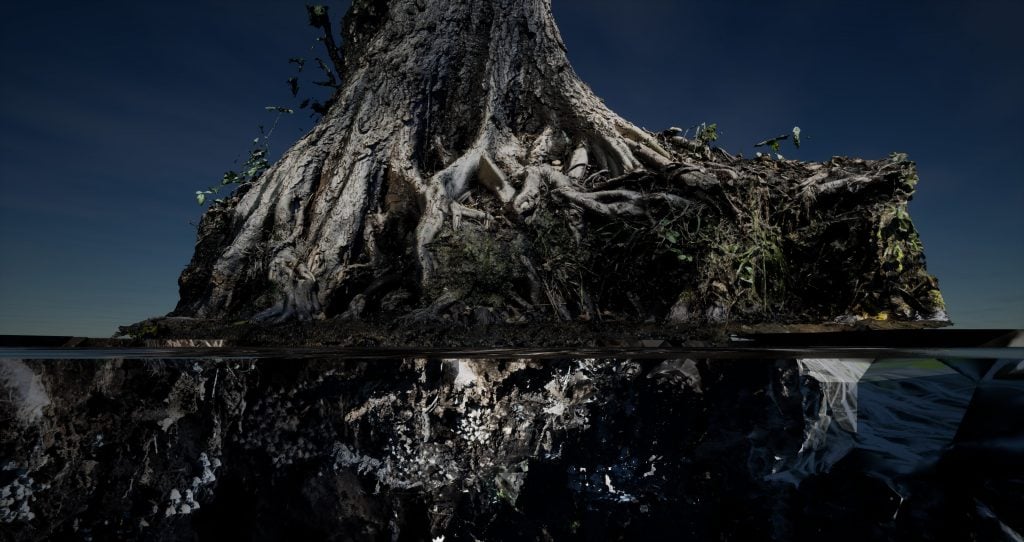
Jakob Kudsk Steensen, Berl-Berl (2021). Live simulation (still). Courtesy of the artist.
The sophisticated imagery is splashed across nearly a dozen screens over two levels, with reflective flooring creating a watery slick that doubles the vibrant imagery. It’s a unique take on immersive art that is tactile and contemplative—soothing, too, at a time when the theme of climate is wrought with anxiety.
The show is being organized by a unique Berlin-based non-profit art foundation called Light Art Space, which focuses on light-based media art that intersects with scientific research. Its helmed by Bettina Kames, an art historian who is its founding director, and backed by collector and business mogul Jan Fischer. Its nomadic program presents a major show at least once a year, when it takes over a large space in the city.
“It has been a great privilege to curate for Light Art Space,” said Emma Enderby, the chief curator at the Shed in New York, who curated the show at Berghain, in a statement. “They have a visionary, experimental, and open approach to thinking about the role an arts foundation can play within society.”
Steensen, a recent resident at the Luma Arles Foundation in France, often focuses on the environment and harnesses technology to achieve a supernatural result. He tapped the acclaimed musical artist Arca to collaborate on the soundscape. She will have a performance at the exhibition in September.
Jakob Kudsk Steensen’s installation Berl-Berl, commissioned by Light Art Space, is on view until September 26 at Halle am Berghain in Berlin.
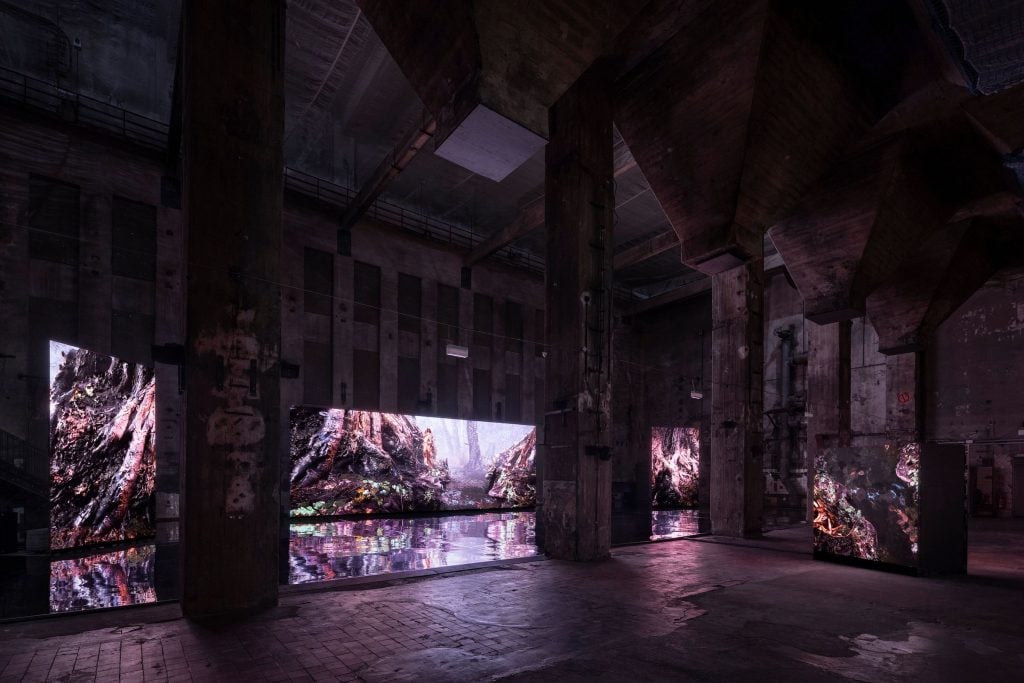
Jakob Kudsk Steensen, Berl-Berl, Halle am Berghain, 2021. © Timo Ohler
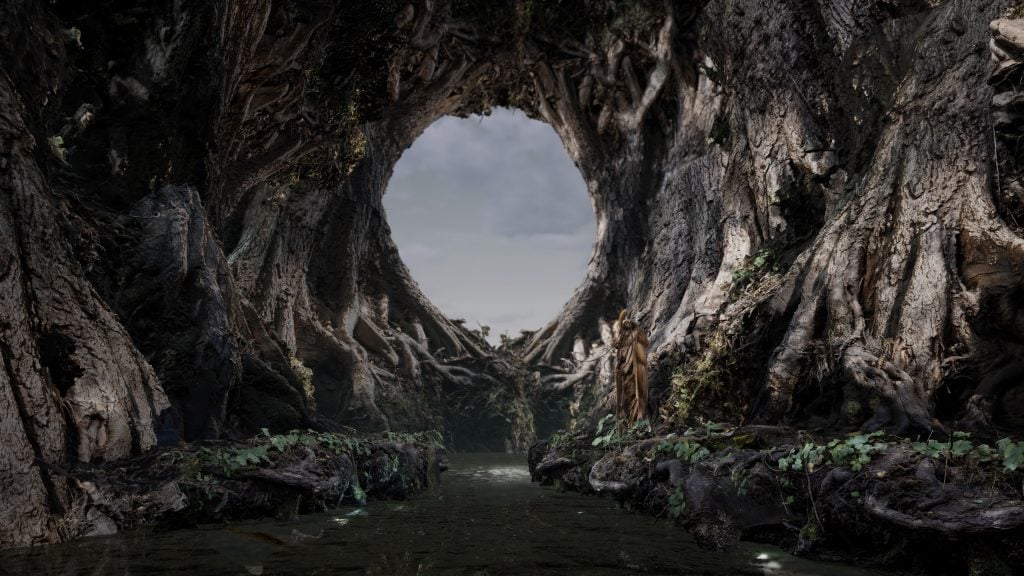
Jakob Kudsk Steensen, Berl-Berl (2021). Live simulation (still). Courtesy of the artist.
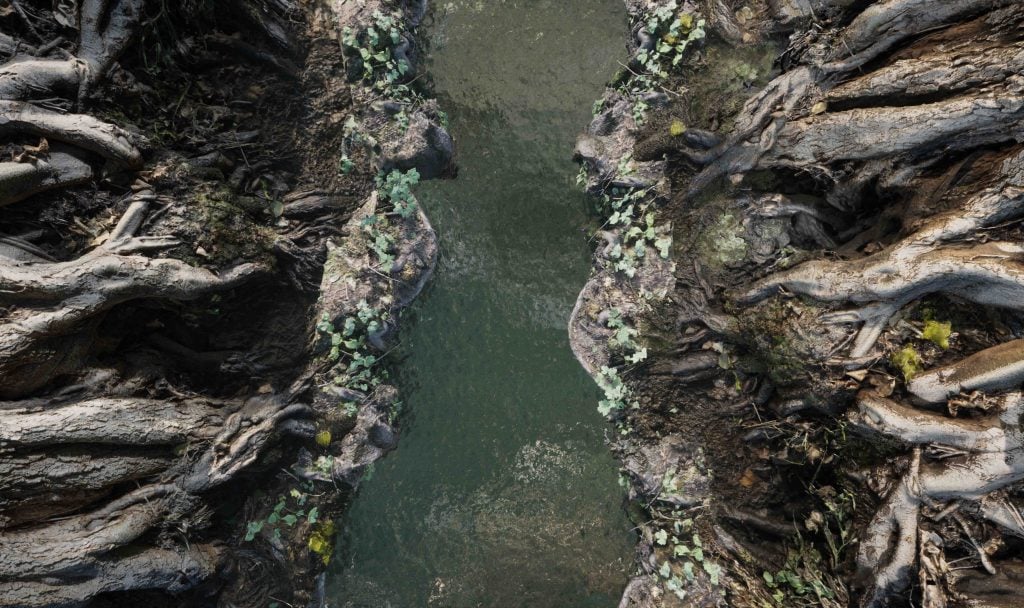
Jakob Kudsk Steensen, Berl-Berl (2021). Live simulation (still). Courtesy of the artist.

Jakob Kudsk Steensen, Berl-Berl (2021). Live simulation (still). Courtesy of the artist.
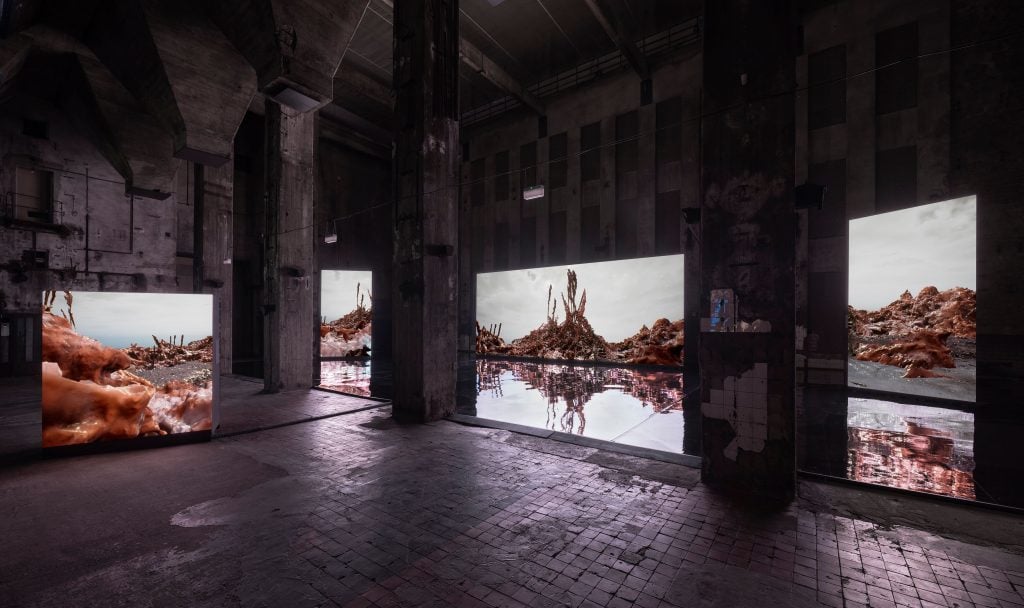
Jakob Kudsk Steensen, Berl-Berl, Halle am Berghain, 2021. © Timo Ohler